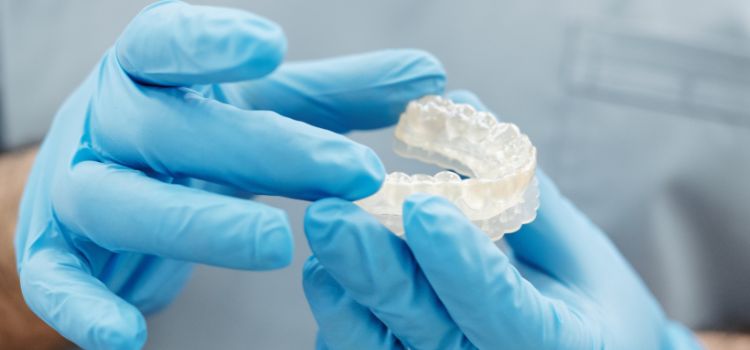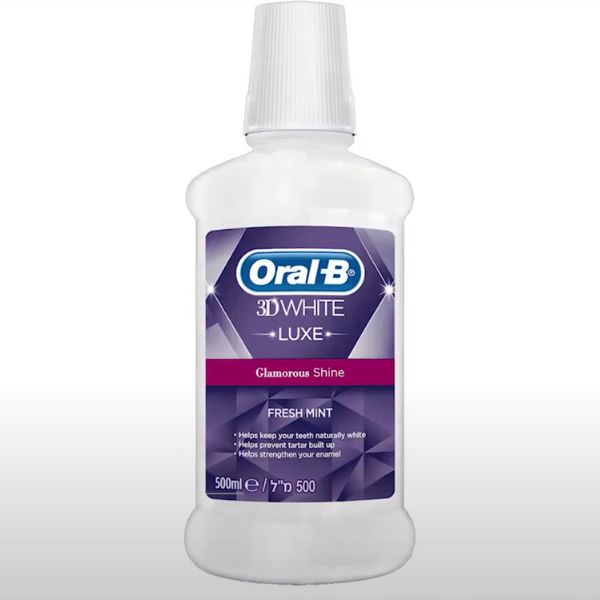While there isn’t a comprehensive body of research on the specific safety of using teeth whitening strips during breastfeeding, it’s generally recommended to exercise caution when using such products.

The concern primarily lies in the potential for the chemicals in teeth whitening products to be ingested or absorbed into the body, which could then be passed to the baby through breast milk. Among the discussions surrounding dental aesthetics, the use of teeth whitening strips emerges as a common query for breastfeeding mothers.
In this discourse, we delve into the nuanced facets of safety associated with employing teeth whitening strips during this unique phase of life.
Potential Risks Of Using Teeth Whitening Strips While Breastfeeding

Using teeth whitening strips while breastfeeding may pose potential risks to both the mother and the baby. Although some dentists believe the small amount of peroxide used in teeth whitening may not have significant effects, it is recommended to avoid such procedures during breastfeeding to ensure the safety and well-being of the infant.
Using teeth whitening strips while breastfeeding may raise concerns about potential risks and safety. It is important to consider the chemical composition of the strips and the possible transfer of these chemicals to breast milk, as well as the potential impact of chemical exposure on the baby.
Chemical Composition Of Teeth Whitening Strips
Teeth whitening strips typically contain a bleaching agent, such as hydrogen peroxide or carbamide peroxide, which is responsible for removing stains and discoloration from the teeth. While these chemicals are generally considered safe for use on teeth, their safety during breastfeeding is still a topic of debate.
Some dentists argue that the small amount of peroxide used in teeth whitening strips is unlikely to have any harmful effects on the baby. However, it is important to note that the safety and effects of these chemicals on breastfed infants have not been extensively studied.
Potential Transfer Of Chemicals To Breastmilk
One concern with using teeth whitening strips while breastfeeding is the potential transfer of chemicals to breast milk. Since breastfeeding involves direct contact between the baby’s mouth and the nipple, there is a possibility that any chemicals present in the mother’s system can be passed on to the baby through breast milk.
While studies on the transfer of teeth whitening chemicals to breast milk are limited, some research suggests that the concentration of peroxide in breast milk may be very low or undetectable after using teeth whitening strips.
However, more research is needed to fully understand the extent of chemical transfer and its potential effects on breastfed infants.
Impact Of Chemical Exposure On Baby
Exposure to chemicals from teeth whitening strips while breastfeeding raises concerns about the potential impact on the baby’s health. Since newborns and infants have developing organs and immune systems, their bodies may be more susceptible to the effects of these chemicals.
Some potential risks of chemical exposure to the baby include:
- Allergic reactions: The chemicals in teeth whitening strips may cause allergic reactions in some individuals, including infants who are breastfed.
- Gastrointestinal issues: Ingesting the chemicals from breast milk may lead to gastrointestinal discomfort or other digestive problems in the baby.
- Developmental concerns: Limited studies suggest that certain chemicals, like hydrogen peroxide, may have developmental effects on growing infants. However, more research is required to establish a clear link.
It is essential to consult with a healthcare provider, such as a dentist or pediatrician, before using teeth whitening strips while breastfeeding. They can provide personalized guidance based on your specific situation and help you make an informed decision about the potential risks and benefits.
Safety Precautions To Consider Before Using Teeth Whitening Strips

Using teeth whitening strips while breastfeeding requires careful consideration. It’s important to prioritize the safety of both the mother and the baby. Here are some safety precautions that should be taken into account.
Consultation with Dentist or Healthcare Provider:
- Before using teeth whitening strips while breastfeeding, it is highly recommended to consult with your dentist or healthcare provider.
- They can provide personalized advice based on your specific situation and advise on the safety aspects involved.
Pregnancy and Breastfeeding Guidelines:
- Follow the guidelines issued by professional medical organizations regarding teeth whitening during pregnancy and breastfeeding.
- It’s important to note that there is limited research on the effects of teeth whitening strips while breastfeeding, so erring on the side of caution is crucial.
Alternative Teeth Whitening Options:
- If you are unsure about the safety of teeth whitening strips while breastfeeding, consider alternative teeth whitening options that have been deemed safe during this period.
- Natural remedies such as oil pulling or whitening toothpaste can be effective and may provide a safer alternative.
Remember, the health and well-being of both the mother and baby should always take precedence. Prioritizing safety and seeking professional guidance can help ensure a positive experience while making informed decisions about teeth whitening strips while breastfeeding.
Alternatives To Teeth Whitening Strips During Breastfeeding

Using teeth whitening strips while breastfeeding is not recommended due to the potential risks of exposing your baby to chemicals. It is best to wait until after breastfeeding to ensure the safety of both you and your baby.
If you’re a breastfeeding mother looking for alternatives to teeth whitening strips, there are several options to consider. Here are some natural, professional, and temporary solutions that can help you achieve a brighter smile:
Natural Teeth Whitening Methods:
- Brush with Baking Soda: Mix a small amount of baking soda with water to create a paste, and gently brush your teeth with it. Baking soda has natural whitening properties that can help remove surface stains.
- Oil Pulling: Swish a tablespoon of coconut oil or sesame oil in your mouth for 10-15 minutes and then spit it out. This ancient method is believed to help remove stains and promote oral health.
- Strawberries: Rubbing a mashed strawberry on your teeth for a few minutes is said to help remove stains and brighten your smile.
Professional Teeth Whitening Procedures:
- Consult a Dentist: Speak with your dentist about safe teeth whitening options that are suitable for breastfeeding mothers. They may recommend in-office treatments or take-home kits with lower concentrations of whitening agents.
Temporary Teeth Whitening Solutions:
- Whitening Toothpaste: Look for toothpaste specifically formulated for teeth whitening. These products often contain gentle polishing agents that can help remove surface stains.
- Whitening Chewing Gum: Chewing gum that contains whitening agents can help freshen your breath while also aiding in stain removal.
- Whitening Mouthwash: Including a whitening mouthwash in your oral hygiene routine can help to remove stains and maintain a brighter smile.
It’s important to note that while these alternatives may be safer during breastfeeding, it’s always best to consult with your dentist before trying any new teeth whitening method. They will be able to provide personalized recommendations based on your specific needs.
Remember, maintaining good oral hygiene practices such as regular brushing, flossing, and visiting your dentist for cleanings can also contribute to a whiter smile.
Frequently Asked Questions
Are Teeth Whitening Strips Safe For Use During Breastfeeding?
While the safety of teeth whitening strips during breastfeeding is not definitively established, caution is advised. The chemicals in these products, particularly peroxide-based agents, may pose potential risks to both the nursing mother and the infant.
What Are The Concerns Associated With Using Teeth Whitening Strips While Breastfeeding?
The primary concern lies in the potential ingestion or absorption of whitening agents, such as hydrogen peroxide or carbamide peroxide, by the mother. These substances could find their way into breast milk and may impact the health of the nursing infant.
How Often Is It Safe To Use Teeth Whitening Strips If I Choose To Do So While Breastfeeding?
The frequency of teeth whitening, even with strips, should be approached with caution. Frequent use may increase the risk of exposure to whitening agents, potentially affecting the quality of breast milk. It’s crucial to adhere to recommended guidelines and consult with healthcare professionals.
Can I Use Teeth Whitening Strips While Pregnant?
No, it is not safe to use teeth whitening strips while pregnant as the chemicals may harm the unborn child.
What Steps Can I Take To Maintain Good Oral Health While Breastfeeding?
Besides teeth whitening concerns, maintaining good oral hygiene is crucial. Brushing, flossing, and regular dental check-ups are key components of a healthy oral care routine. Stay hydrated, consume a balanced diet, and consult with your dentist for personalized advice.
Conclusion
Many dentists believe that it is safe to use teeth whitening strips while breastfeeding. The small amount of peroxide used in teeth whitening is unlikely to have any negative effects on the baby’s system.
However, While there isn’t a definitive consensus, it is crucial to approach such cosmetic practices with caution during this unique phase of life. Prioritizing the well-being of both the nursing mother and the infant is paramount.
Consultation with a dentist and healthcare provider is strongly encouraged to make informed decisions tailored to individual health circumstances. Additionally, exploring alternative, potentially safer teeth whitening options and maintaining a robust oral hygiene routine contribute to comprehensive dental care while ensuring the peace of mind of breastfeeding mothers.
Ultimately, a balanced and informed approach will empower individuals to make choices that align with both their aesthetic goals and the health of their growing family.
Leave a Reply